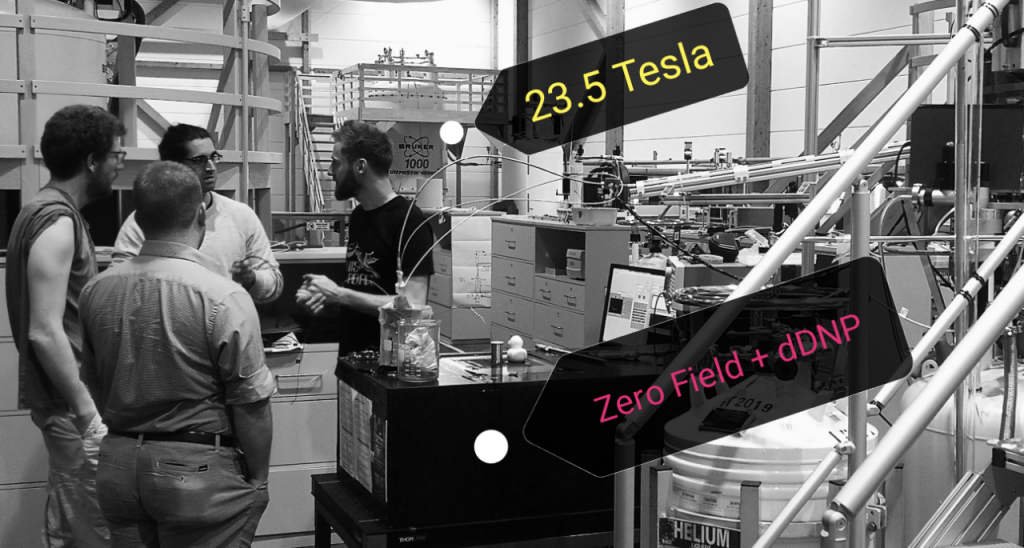Nuclear magnetic resonance (NMR) experiments are conventionally performed in large magnetic fields in order to increase chemical shift resolution and to maximize signal via higher nuclear spin polarization and improved inductive detection sensitivity. Zero-field NMR is an alternative magnetic resonance modality where measurements are performed in the absence of an applied magnetic field. Unlike conventional NMR, in which “external” spin interactions – couplings to fields originating from the experimental apparatus – are dominant, zero-field NMR presents a regime dominated by “internal” spin interactions – couplings to fields originating from the sample itself.
Specifically, in zero-to-ultra-low-field nuclear magnetic resonance (ZULF-NMR) the Zeeman interaction is negligible or small enough that it can be treated as a perturbation on the “local” J-coupling and dipole-dipole interactions. In this regime, the internal spin-spin coupling Hamiltonians are not truncated by the imposed symmetry of a large magnetic field, so all chemical and structural information encoded in the interaction tensors is preserved. Whereas the high-field weak-coupling regime is optimal for chemical shift measurements, the inverse regime of zero-field is the natural environment for the observation of spin-spin couplings. These local interactions are exquisitely sensitive to subtle changes in geometry, conformation, and electronic structure, thus serving as a valuable source of chemical and structural information.
Advances Engineering magazine reports our gradiometer work: https://advanceseng.com/gradiometer-improves-magnetic-resonance-without-magnets/
Funder:
 EC – European Commission
EC – European Commission
Project Number: 766402
Funded under: H2020-EU.1.3.1. – Fostering new skills by means of excellent initial training of researchers


